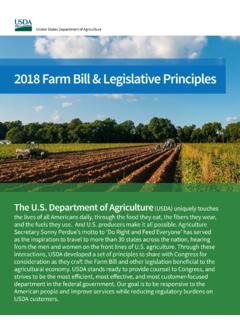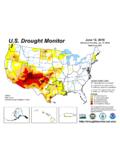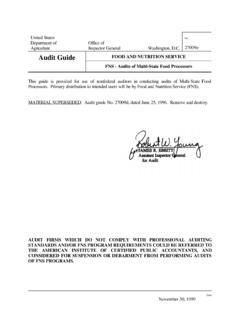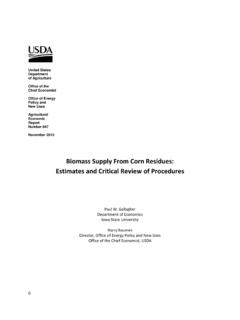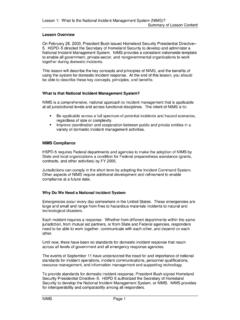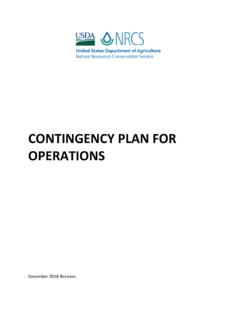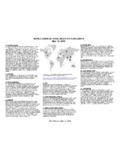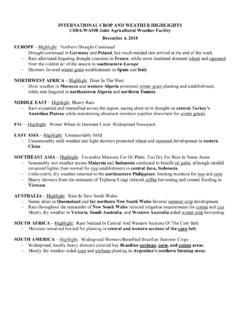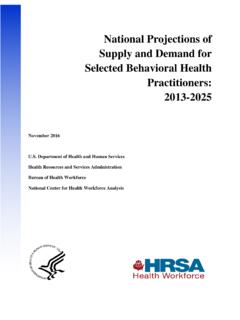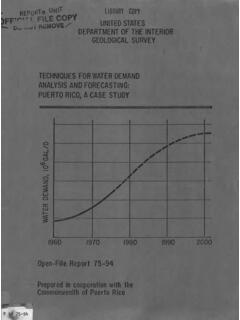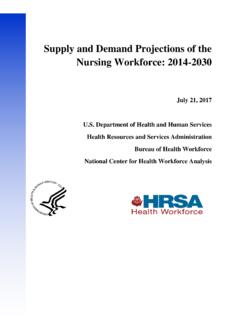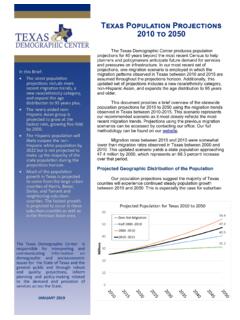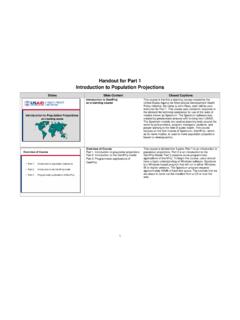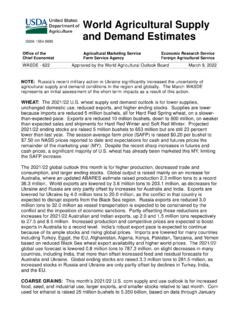Transcription of United States Department of Agriculture
1 February 24-25, 2022 States Department of Agriculture - 2 - Agricultural Outlook Forum 2022 Released: Thursday, February 24, 2022 GRAINS AND OILSEEDS OUTLOOK FOR 20221 Prepared by Members of the Wheat, Feed Grains, Rice, and Oilseeds Interagency Commodity Estimates Committees Department of Agriculture Planted Acreage Outlook for 2022 (Table 1) This paper provides USDA s projections of 2022/23 supply, demand , and prices for wheat, corn, rice, soybeans, and soybean products. Projections presented in this paper include implications of the January 12 NASS Winter Wheat and Canola Seedings report, which estimated that winter wheat area increased 7 percent from the prior 5-year average.
2 The projections assume normal weather conditions for spring planting and summer crop development. These forecasts will be updated in the May 12 World Agricultural Supply and demand Estimates (WASDE) report. The May WASDE will incorporate farmers 2022 planting intentions as indicated in the March 31 NASS Prospective Plantings report and survey-based forecasts for winter wheat production, as well as global, country- by-country supply and demand projections. The 2022 planted area outlook shows a slight increase in combined corn, wheat, and soybean acres from last year and the highest total since 2014.
3 Combined acreage for corn and soybeans is expected to reach million acres, down slightly compared to last year when there was low prevented plantings and record acres of million. Shifts in relative prices and higher input costs support a year-to-year decrease in expected corn plantings, although the decline is moderated by the highest projected corn price for crop insurance purposes in over a decade. Soybean area is forecast to increase as strong crush demand and the current drought in South America has resulted in very favorable new-crop pricing opportunities for producers.
4 In addition, soybean plantings are expected to benefit as farmers focus on managing high production costs. Strong wheat prices and the tightest stocks-to-use ratio since 2013/14 are expected to boost total wheat acres to million. With higher supplies, prices for all three commodities are expected to decline from last year. Table 1. Wheat, Corn, and Soybean Planted Acreage, 2015-2022 2015 2016 2017 2018 2019 2020 2021 2022 1/ - Million Acres - Wheat Corn Soybeans Total 1/ projection Source: National Agricultural Statistics Service data 2015-2021 Note: Totals may not add due to rounding.
5 1 This paper incorporates contributions by analysts from the World Agricultural Outlook Board, the Economic Research Service, the FPAC-BC, and the Foreign Agricultural Service. - 3 - Wheat Supply, demand , and Price Outlook for 2022/23 (Table 2) The 2022/23 outlook for wheat is for increased supplies, slightly larger total use, and higher ending stocks. wheat production is projected 18 percent above 2021/22 at 1,940 million bushels on both higher area and yield. The NASS Winter Wheat and Canola Seedings report estimated winter wheat seeded area at million acres, up 2 percent from 2021/22 and the largest since 2016/17.
6 Combined spring and durum wheat plantings for 2022/23 are also projected higher although constrained by favorable prices for alternatives beyond corn and soybeans in the Northern Plains, including minor oilseeds, other small grains, and pulses. Total wheat planted area for 2022/23 is projected at million acres, up nearly million acres from last year and the highest wheat area since 2016/17. The all wheat yield for 2022/23 is projected up 11 percent from last year s drought-affected yield at bushels per acre and is based on a long-term linear trend.
7 A significantly larger crop more than offsets lower beginning stocks to raise 2022/23 supplies by 5 percent to 2,708 million bushels. At 1,977 million bushels, projected 2022/23 total use is up slightly from a year earlier but below the 5-year average. domestic use is projected modestly lower on reduced feed and residual use despite increased supplies as corn is expected to be more competitively priced during the summer months. Food use is projected marginally higher as population growth is expected to more than offset the effect of slightly lower per capita consumption.
8 Higher exports are expected to more than offset lower domestic use although exports are still forecast below the 5-year average. export prices are expected to remain uncompetitive in several markets, limiting export gains. With supplies projected to increase more than total use, 2022/23 ending stocks are raised to 731 million bushels. This is 13 percent above last year but well below the 5-year average. The increased stocks and higher stocks-to-use ratio of percent contributes to a projected 2022/23 season-average farm price of $ per bushel, down $ from 2021/22.
9 Corn Supply, demand , and Price Outlook for 2022/23 (Table 3) The corn outlook for 2022/23 is for modestly larger production, greater domestic use, lower exports, and higher ending stocks. The corn crop is projected at a record billion bushels, about 1 percent above a year ago as a forecast decline in area is more than offset by a return to trend yields. The yield projection of bushels per acre is based on a weather-adjusted trend assuming normal planting progress and summer growing season weather.
10 With beginning stocks higher relative to a year ago, total corn supplies are forecast at billion bushels, or up just under 3 percent. Total corn use in 2022/23 is forecast virtually unchanged from a year ago as growth in domestic use is essentially offset by lower exports. Food, seed, and industrial (FSI) use is projected up about 1 percent to billion bushels. Corn used for ethanol is projected up 75 million bushels to billion, based on expectations of growth in motor gasoline consumption. Feed and residual use is unchanged at billion, reflecting corn production near a year ago and expectations of declining cattle on feed numbers during the year.
